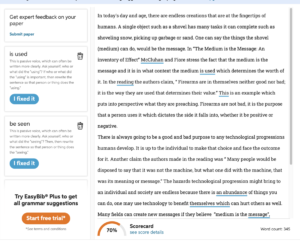In today’s day and age, there are endless creations that are at the fingertips of humans. A single object such as a shovel has many tasks it can complete, such as shoveling snow, picking up garbage or sand. One can say the things the shovel (medium) can do would be the message. In the book ” Understanding Media: The Extensions of Man” Marshall McCluhan stresses the fact that the medium is the message. It is in what context the medium is used which determines the worth of it. In the reading, McCluhan claim, “Firearms are in themselves neither good nor bad; it is the way they are used that determines their value.” This is an example which puts into perspective what they are preaching. Firearms are not bad. It is the purpose that a person uses it, which dictates the side it falls into, whether it is positive or negative.
There is always going to be a good and bad purpose to any technological progressions humans develop. It is up to the individual to make that choice and face the outcome. Another claim the author made in the reading was “Many people would be disposed to say that it was not the machine, but what one did with the machine, that was its meaning or message.” The hazards technological progression might bring to an individual and society are endless because there is an abundance of things you can do. One may use technology to benefit themselves, which can hurt others as well.
Many fields can create new messages if they believe “medium is the message”, especially artists and designers, because they can find/make unique ways to use the medium to their advantage. The role they can play is up to them. It depends on the details such as the demographic and where they would place this to be acknowledged by the public. Designers can use their creative abilities to produce unique messages with mediums that are known and they’re able to have fun with it.

chrome-extension://bjfhmglciegochdpefhhlphglcehbmek/pdfjs/web/viewer.html?file=file%3A%2F%2F%2FUsers%2Fsonia%2FDownloads%2FMcLuhan_UnderstandingMedia_exc%2520(1).pdf
https://docs.google.com/document/d/16ppTYU6C_OSf6jHetG1e-QD2A9UOBL0S5F9bXh4pNec/edit?usp=sharing





Recent Comments